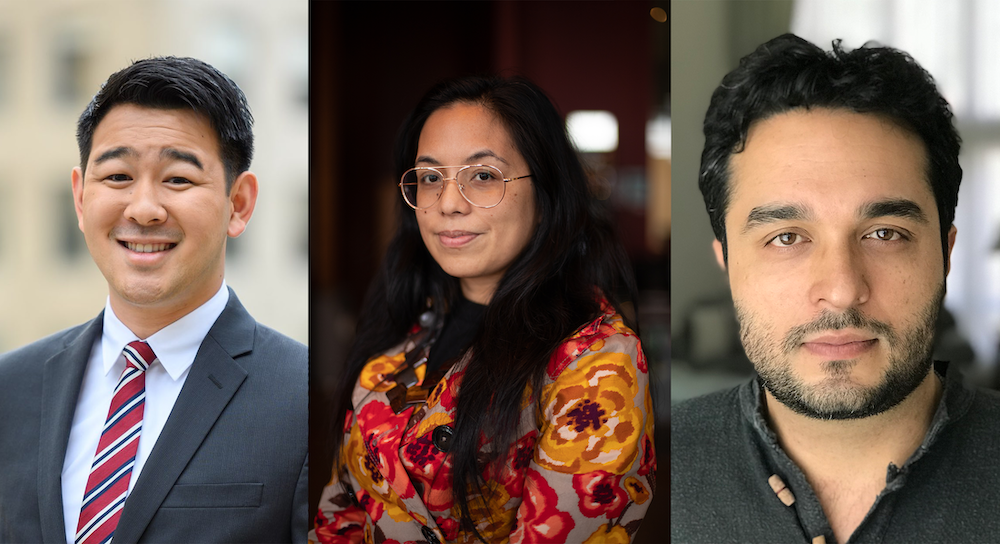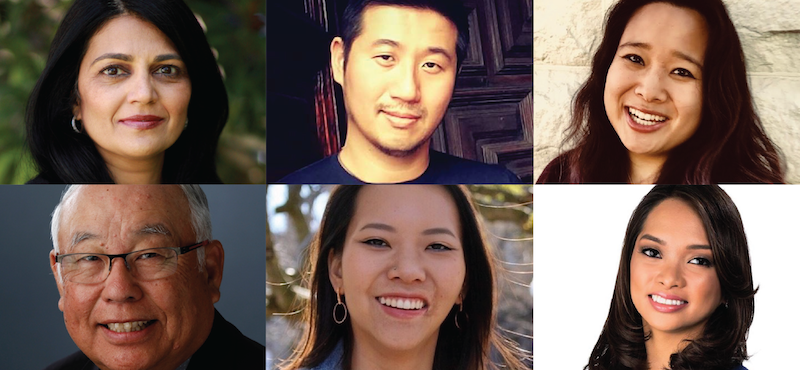January 25, 2023
In the wake of the shooting in Half Moon Bay, AAJA urges newsrooms to responsibly and fairly cover the Asian American communities that have been affected. The Half Moon Bay attack, which killed both Chinese and Latino farmworkers, came just days after the Monterey Park shooting that left 11 Asian Americans dead.
AAJA has updated this advisory to include the death toll for the Monterey Park shooting, as well as a pronunciation guide for the Monterey Park victims’ names, which were released by the Los Angeles County coroner’s office, and a pronunciation guide for the Half Moon Bay victims’ names, which were released by the San Mateo County coroner’s office.
We also urge newsrooms to provide the necessary mental health support for Asian American and Pacific Islander journalists to process the recent events during a time of increased stress within AAPI communities.
There will be an off-the-record grief/healing session facilitated by Jeanie Y. Chang, an AAPI mental health expert and certified clinical trauma professional. The session will be held on Sunday, Jan. 29 at 7 p.m. ET and you can register here.
January 22, 2023
AAJA is devastated to learn about the mass shooting following a Lunar New Year celebration in Monterey Park that left 11 individuals dead and nine injured.
AAJA sends our deepest condolences to the families affected in Monterey Park. Monterey Park’s Asian American community makes up more than 65% of the city’s population, and this shooting occurred as Asian Americans nationwide gathered with loved ones to celebrate Lunar New Year.
As we learn more details about the shooting, AAJA recommends that newsrooms cover this tragedy with empathy, while centering community stories, and with the awareness of the tremendous stress and anxiety that the Asian American community has undergone over the last three years.
AAJA reiterates our guidance on how to cover Asian American communities:
Names / Terminology / Coverage
Double-check names, pronunciations, and faces as a general rule, but especially when covering communities different from your own.
Avoid using gratuitous graphic imagery or videos of violence without thoughtful consideration of the value it adds to the story and coverage as it may traumatize or retraumatize Asian Americans.
Be specific and descriptive when referring to violence and harassment aimed at Asians, Asian Americans and Pacific Islanders. Rather than using euphemisms like “anti-Asian sentiment” or “anti-Asian hate,” assess whether it is more accurate to use terms like “anti-Asian racism,” “anti-Asian bias,” “anti-Asian rhetoric,” or “anti-Asian violence.” Recognize that “hate crime” is a legal term that has limitations. Regardless of a crime or incident’s classification, motive, or intention, the impact on the community should be reported.
Sources
Avoid assumptions, insinuations and relying on unverified sources. Institutional sources must be verified. Newsrooms need to consider: What is the relevance of your story to this shooting? What is the necessary context? What sources or resources are you using to inform your reporting, and are they verifiable or credible? Does this source’s assertion/judgment fully tell the story or inadvertently neglect other important factors of the full story?
Diversify your sources by interviewing and quoting AAPI experts who can legitimately speak on behalf of the community. Build relationships within the communities on which you are reporting. Question the proximity of your source with the geography and communities featured in your story. AAJA’s speakers bureau, AAJA Studio, includes AAPI researchers, experts and thought leaders with expertise in civil rights, hate crimes, AAPI history, racial justice and community-building work, racial profiling and discrimination. AAJA Studio is not an exhaustive list of experts. We encourage reaching out to AAPI studies professors and scholars as well.
Acknowledge and attribute credit to community media sources, and support the work of in-language and community media.
Contextualization
We encourage contextualization and that reporters center community experiences and victims’ and survivors’ stories.
We urge newsrooms to cover the violence in the context of the recent rise in attacks on Asian Americans and heightened fear among AAPI communities across the country.
The beginning of the new lunar calendar is celebrated across many Asian communities and cultures. According to the U.S. Census Bureau, more than 8 million people in the U.S. celebrate the Lunar New Year.
We urge newsrooms to empower and support their AAPI journalists and colleagues, while not relying on them completely to be total experts on AAPI communities. We encourage newsrooms to provide AAPI journalists with the necessary mental wellness support as our community faces increased anti-Asian violence and sentiment.
AAJA is monitoring this developing story and may update this statement as more information becomes available.
###
ABOUT THE ASIAN AMERICAN JOURNALISTS ASSOCIATION
The Asian American Journalists Association is a professional membership association founded in 1981. Since its founding, AAJA has been at the forefront of change in the journalism industry, advocating for accurate, comprehensive and fair coverage of the AAPI community. We champion the development of AAPI representation and leadership in journalism through trainings, opportunities and resources for our members as well as through nurturing and maintaining a network and community of AAPI journalists globally. Learn more at www.aaja.org or follow us on Twitter @AAJA.




